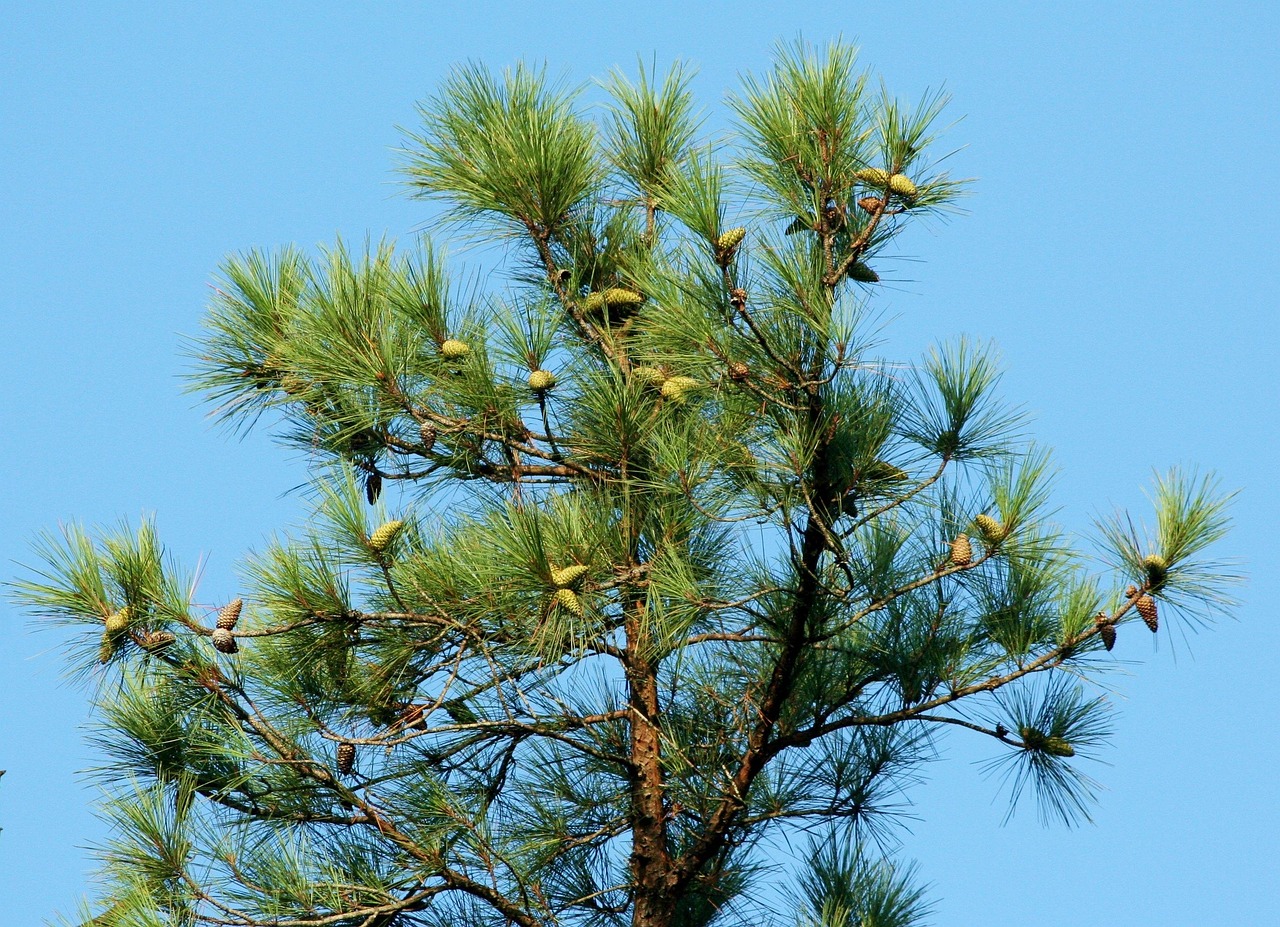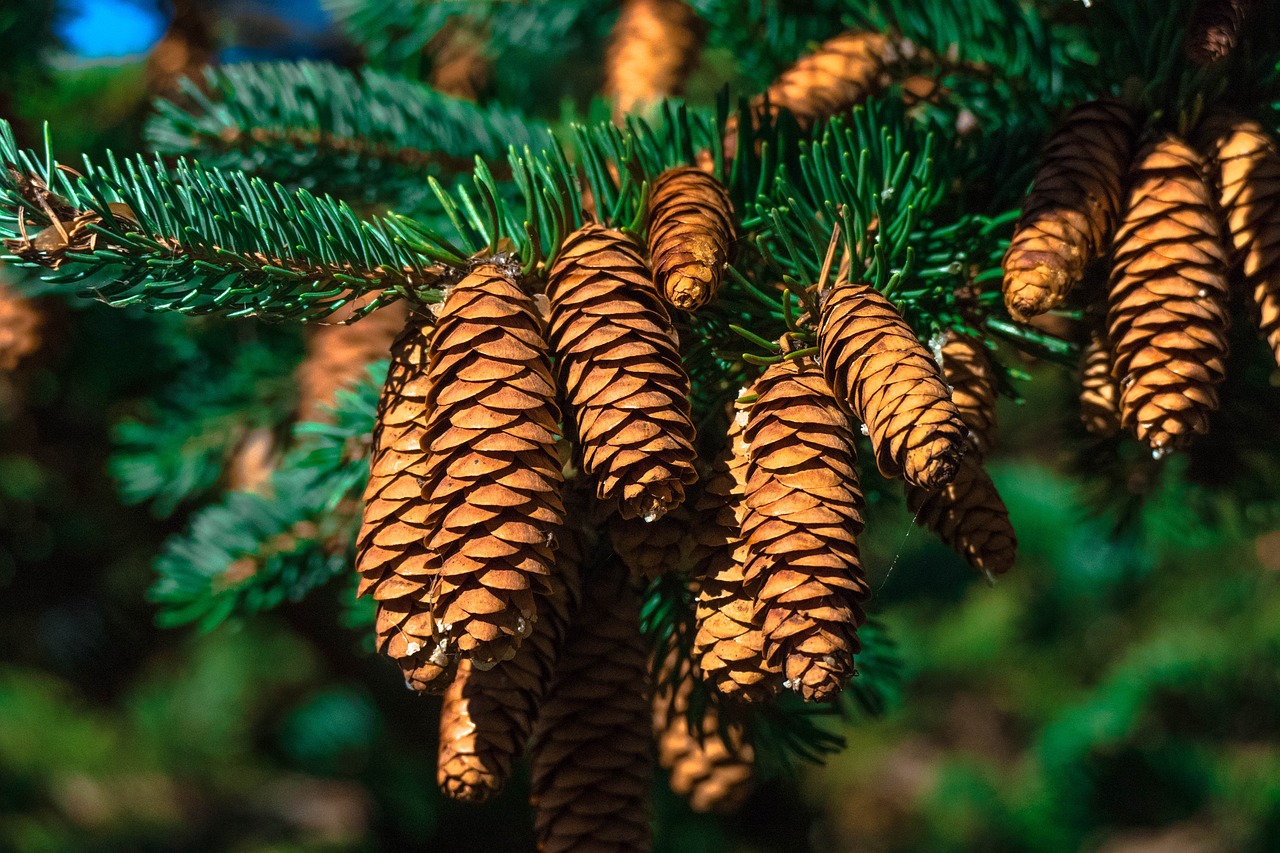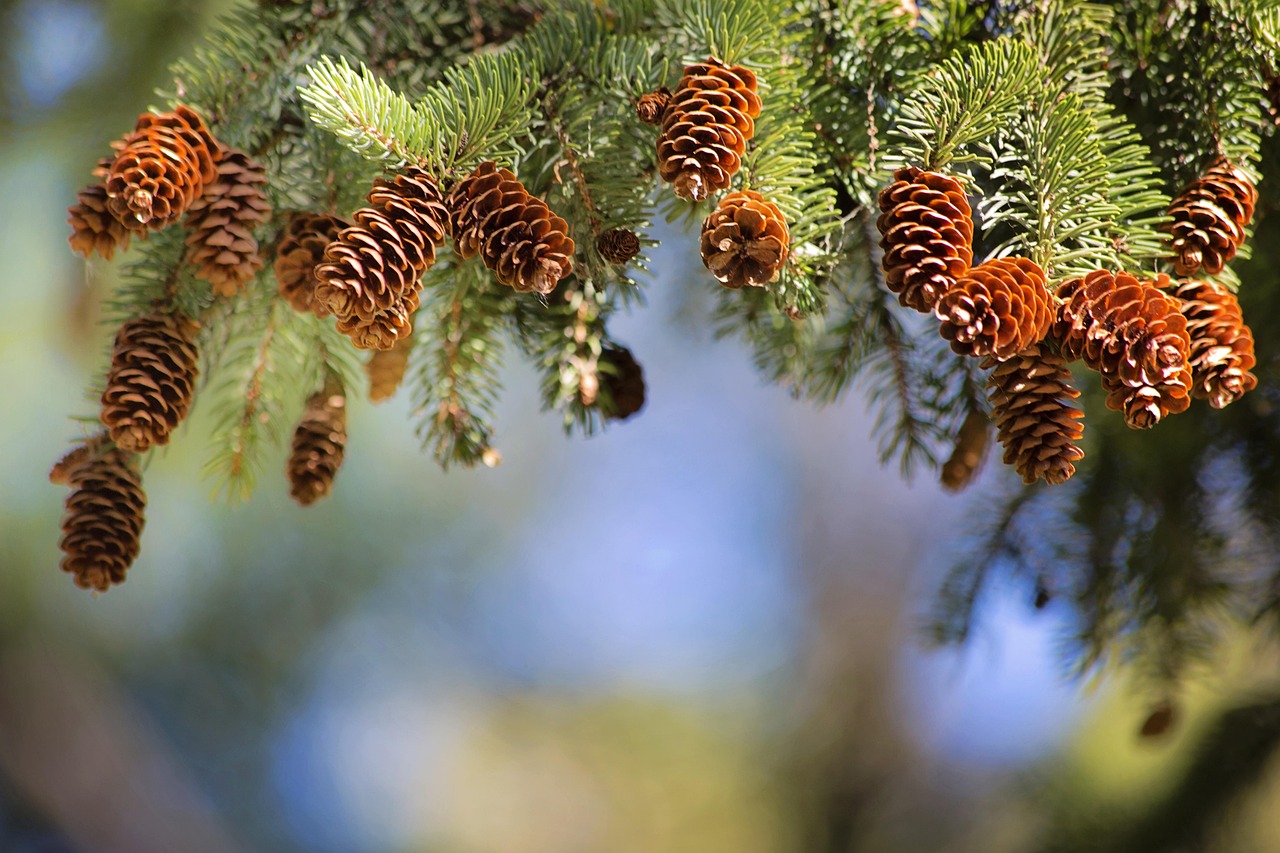Yes, you can use Loblolly Pine needles to make tea. The needles are rich in vitamin C and have a pleasant, piney flavor. However, it is essential to properly identify the tree and prepare the needles correctly before consumption.
Understanding Loblolly Pine

Loblolly Pine (Pinus taeda) is a fast-growing tree native to the southeastern United States. It thrives in a variety of conditions, particularly in moist, warm climates. This tree is notable for its tall, straight trunk and long, slender needles, which can grow up to 10 inches in length.
The Loblolly Pine plays a significant role in the ecosystems where it is found. It provides habitat for various wildlife species and contributes to soil stability and health. In addition to its ecological importance, Loblolly Pine is also a vital commercial resource. It is widely harvested for timber and pulpwood due to its rapid growth and straight grain.
In recent years, there has been growing interest in the potential health benefits of Loblolly Pine needles. Many people are curious about using these needles to make herbal tea. The tea is not only flavorful but also packed with nutrients that may offer various health benefits.
Nutritional Benefits of Loblolly Pine Needles
Loblolly Pine needles are known for their high vitamin C content. This essential nutrient is crucial for maintaining a healthy immune system, promoting skin health, and aiding in the absorption of iron. In addition to vitamin C, Loblolly Pine needles contain several other beneficial compounds.
| Nutrient | Benefit |
|---|---|
| Vitamin C | Boosts immune function and promotes skin health |
| Antioxidants | Help reduce inflammation and combat oxidative stress |
| Essential Oils | May have antimicrobial properties and enhance respiratory health |
The combination of these nutrients makes Loblolly Pine needles an appealing option for those looking to enhance their diet with natural, plant-based sources of vitamins and minerals. When prepared correctly, the tea made from these needles can offer a refreshing beverage with added health benefits.
Preparing Loblolly Pine Needles for Tea
To make tea from Loblolly Pine needles, it is crucial first to ensure that you have the correct species. While many pine trees are safe to consume, some can be toxic. Always consult a reliable resource or expert if you are unsure about identification.
Once you have confirmed that you are using Loblolly Pine needles, follow these steps to prepare your tea:
- Harvesting: Gather fresh needles from healthy trees, preferably from the current year’s growth.
- Washing: Rinse the needles thoroughly under cool water to remove any dirt or contaminants.
- Chopping: Cut the needles into smaller pieces to help release their flavor and nutrients during brewing.
- Brewing: Place the chopped needles in boiling water and let them steep for about 5-10 minutes, depending on your taste preference.
- Straining: Use a fine mesh strainer to remove the needle pieces before serving.
You can enjoy the tea plain or add honey or lemon for extra flavor. This simple preparation allows you to experience the unique taste and health benefits of Loblolly Pine needles in your daily routine.
Potential Health Benefits of Loblolly Pine Needle Tea
Consuming Loblolly Pine needle tea may offer several health benefits due to its rich nutritional profile. Many herbal enthusiasts have praised the pine needles for their potential therapeutic properties. Here are some of the key health benefits associated with Loblolly Pine needle tea:
- Immune Support: The high vitamin C content in Loblolly Pine needles can help boost the immune system, making it more effective against common colds and infections.
- Antioxidant Properties: Pine needles contain antioxidants, which may help combat oxidative stress in the body. This can potentially reduce the risk of chronic diseases.
- Respiratory Health: Inhaling the aroma of pine needles or consuming them in tea may aid respiratory function. The essential oils in the needles can help clear congestion and promote easier breathing.
- Anti-Inflammatory Effects: Some studies suggest that compounds found in pine needles may possess anti-inflammatory properties, which could be beneficial for conditions like arthritis.
Precautions When Consuming Pine Needle Tea
While Loblolly Pine needle tea can be beneficial, it is essential to take certain precautions. Not all pine species are safe for consumption, and some may even be toxic. Additionally, certain individuals should avoid consuming pine needle tea altogether.
Here are some important considerations:
- Species Identification: Ensure you are consuming Loblolly Pine (Pinus taeda) and not another potentially harmful species. If unsure, consult a local expert or reliable resource.
- Pregnancy and Nursing: Pregnant or nursing women should avoid pine needle tea, as it may have adverse effects on fetal development or lactation.
- Allergies: Individuals with allergies to pine or related plants should avoid this tea to prevent allergic reactions.
- Consultation with a Healthcare Provider: Always consult a healthcare professional before adding new herbal remedies to your diet, especially if you have pre-existing health conditions or are taking medications.
Flavor Profile and Culinary Uses
Loblolly Pine needle tea has a unique flavor profile that is both earthy and slightly sweet, with a refreshing pine aroma. Many people enjoy the taste of this herbal tea, which can remind one of a walk through a pine forest. The flavor can be enhanced by adding other ingredients.
You might consider these culinary uses for Loblolly Pine needles:
- Herbal Blends: Combine Loblolly Pine needles with other herbs like mint or chamomile to create a flavorful herbal blend.
- Baking: Finely chopped pine needles can be added to baked goods, such as muffins or breads, for an aromatic twist.
- Infused Syrups: Use Loblolly Pine needles to make infused syrups that can be drizzled over pancakes, waffles, or desserts.
The versatility of Loblolly Pine needles allows for creative culinary experimentation. Their distinct flavor can add a refreshing twist to many dishes or beverages.
Cultural Significance and Historical Uses
The use of pine needles for medicinal and culinary purposes dates back centuries. Indigenous peoples across North America have utilized various pine species for their nutritional and medicinal properties. Loblolly Pine needles were no exception and were often used as a source of vitamin C during long winters when fresh produce was scarce.
Historically, pine needle tea has been celebrated for its invigorating qualities. It was commonly consumed as a remedy for colds and flu, and its aroma was believed to promote relaxation and mental clarity.
This cultural significance continues today, as more people rediscover traditional practices and seek natural remedies from their local environments. The renewed interest in herbal teas reflects a broader trend towards sustainable living and a return to nature.
As you explore the potential benefits of Loblolly Pine needle tea, remember to approach it with an informed perspective. Understanding both its advantages and precautions will help ensure that you enjoy this unique herbal beverage safely and effectively.
Environmental Impact of Loblolly Pine

Loblolly Pine is not only valued for its health benefits but also for its significant role in the environment. This tree species contributes to ecosystems in multiple ways. Understanding its environmental impact can enhance appreciation for the Loblolly Pine and its needles.

Habitat and Biodiversity
Loblolly Pine forests provide essential habitats for various wildlife species. These forests are home to numerous birds, mammals, and insects. The biodiversity supported by Loblolly Pine trees contributes to the overall health of forest ecosystems.
- Bird Species: Many birds, such as woodpeckers and owls, find shelter and food in Loblolly Pine forests.
- Mammals: Species like deer and squirrels rely on the trees for shelter and sustenance.
- Insect Life: Loblolly Pines support a diverse range of insects, which play crucial roles in pollination and as food sources for other animals.
Soil Health and Erosion Control
The root systems of Loblolly Pines help to stabilize the soil, reducing erosion. Their ability to thrive in various soil types means they can contribute positively to soil health in different environments.
- Soil Stabilization: The extensive root system of Loblolly Pines helps anchor soil, preventing it from being washed away during heavy rains.
- Nutrient Cycling: When pine needles fall to the ground, they decompose and enrich the soil with organic matter, improving fertility.
- Water Retention: Healthy forests retain moisture in the soil, benefiting both plants and animals in the surrounding area.
Economic Importance of Loblolly Pine
Loblolly Pine is one of the most economically significant tree species in the United States. Its fast growth and adaptability make it a favored choice for timber production.
Timber and Pulpwood Production
The timber harvested from Loblolly Pines is used in various industries. Its strong and straight wood makes it an ideal material for construction, furniture, and paper products.
- Construction: Loblolly Pine lumber is commonly used in building homes and commercial structures.
- Pulpwood: The wood is processed into pulp for paper production, making it vital to the paper industry.
- Other Products: Value-added products, such as flooring and cabinetry, are also made from Loblolly Pine.
Sustainable Forestry Practices
The economic importance of Loblolly Pine has led to the development of sustainable forestry practices. These practices ensure that harvesting does not negatively impact the environment.
- Selective Logging: This method involves carefully choosing which trees to harvest, allowing the forest to regenerate naturally.
- Reforestation: Planting new trees after harvesting ensures that future generations can benefit from Loblolly Pine forests.
- Monitoring Ecosystems: Regular assessment of forest health helps maintain biodiversity and ecosystem services.
Culinary Uses Beyond Tea
While Loblolly Pine needles are primarily known for their use in tea, they can also be incorporated into various culinary applications. Their unique flavor can enhance a range of dishes.
Creative Culinary Recipes
Cooks and herbal enthusiasts can experiment with Loblolly Pine needles in numerous recipes. Here are some ideas:
- Pine Needle Syrup: Combine pine needles with sugar and water to create a syrup that can be drizzled over desserts or added to beverages.
- Pine-Infused Oil: Steep pine needles in olive oil for a unique flavor that can be used in salad dressings or marinades.
- Pine Needle Ice Cream: Infuse cream with pine needles before freezing for a refreshing and aromatic dessert.
The versatility of Loblolly Pine needles allows for creativity in the kitchen. As more people discover these culinary uses, they can enjoy the distinct flavors while benefiting from their nutritional properties.
Foraging Considerations
If you are interested in foraging for Loblolly Pine needles, it is crucial to do so responsibly. Foraging can be a rewarding experience, but it requires knowledge and respect for the environment.
- Leave No Trace: Always practice sustainable foraging techniques. Only take what you need and avoid overharvesting any area.
- Respect Local Regulations: Be aware of any local laws regarding foraging in public or protected areas.
- Educate Yourself: Take time to learn about Loblolly Pines and their ecosystems before venturing out to forage.
Being informed about ethical foraging practices ensures that we can enjoy the benefits of nature while preserving it for future generations.
Additional Uses of Loblolly Pine
Beyond culinary applications and health benefits, Loblolly Pine serves various purposes that highlight its versatility. This tree is not merely a source of needles for tea; its wood and other by-products contribute significantly to many aspects of human life.
Timber and Building Materials
Loblolly Pine timber is highly sought after in the construction industry. Its straight grain and durability make it a popular choice for a variety of applications:
- Framing: Loblolly Pine is often used in the framing of residential and commercial buildings due to its strength.
- Furniture: Its aesthetic appeal makes it a favored material for crafting furniture, from tables to chairs.
- Flooring: Many homeowners choose Loblolly Pine for flooring because of its beauty and resilience.
Environmental Restoration
Loblolly Pine plays a crucial role in environmental restoration efforts. Its rapid growth and ability to thrive in varied conditions make it suitable for reforestation projects.
- Restoration of Degraded Lands: Loblolly Pine can help restore areas that have been disturbed by logging or agricultural practices.
- Carbon Sequestration: Like all trees, Loblolly Pines absorb carbon dioxide, making them important allies in the fight against climate change.
- Habitat Creation: Planting Loblolly Pines can create new habitats for wildlife, contributing to biodiversity recovery.
Challenges Facing Loblolly Pine

While Loblolly Pine is a valuable resource, it faces several challenges that can impact its health and sustainability. Awareness of these challenges is essential for anyone interested in cultivating or foraging this tree.
Pest and Disease Management
Loblolly Pine is susceptible to various pests and diseases that can threaten its health. Some common issues include:
- Pine Beetles: These insects can cause significant damage by burrowing into the bark and disrupting nutrient flow.
- Fungal Infections: Certain fungal diseases can weaken trees or lead to decay, affecting both their health and timber quality.
Climate Change Impacts
Climate change poses a threat to Loblolly Pine forests. Changes in temperature, rainfall patterns, and increased frequency of storms can affect growth and survival rates. Adaptation strategies are necessary to ensure these forests remain resilient.
Final Thoughts
The use of Loblolly Pine needles to make tea represents just one aspect of this remarkable tree. With its numerous health benefits, culinary versatility, and vital environmental roles, Loblolly Pine is deserving of appreciation and respect. However, it is crucial to approach foraging and consumption knowledgeably, respecting local ecosystems and regulations.
As interest in natural remedies continues to grow, Loblolly Pine needle tea offers a unique opportunity to connect with nature while benefiting from its rich nutritional content. By understanding the tree’s ecological significance, economic importance, and potential health benefits, we can foster a greater appreciation for this native species.
Incorporating Loblolly Pine into your diet and lifestyle not only enriches your health but also supports sustainable practices that benefit our environment. Whether you choose to enjoy it as tea or explore other culinary uses, embracing this natural resource connects us with the land and traditions of those who came before us. Through responsible foraging and consumption, we can ensure that the benefits of Loblolly Pine continue for generations to come.
